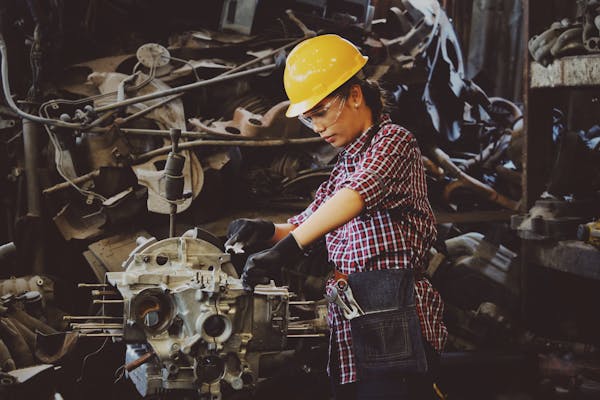Addressing gender inequality in VET

VET plays a vital role in equipping learners with the practical skills and specialised knowledge needed for trades and professions. However, there are often gender imbalances in vocational education and training, which can lead to a host of negative consequences in professions and society, including labour market and skills shortages, mental health impacts on employee morale and negative workplace cultures, and limits to innovation and economic growth, both for individuals and societies.
Tackling gender stereotypes
Traditional gender roles and stereotypes can influence people’s interests from an early age. Boys are often encouraged toward scientific, technical and engineering fields, while girls are often steered towards caregiving and social professions. The absence of female role models in male-dominated fields can deter young women from considering careers in these areas. Equally, gender stereotypes also deter male pupils from entering female-dominated professions, and becoming role models for young boys.
The gender divide is much more extreme in vocational education than general education in almost all EU countries. The European Union recognises the importance of addressing professional gender imbalances and has several initiatives aimed at promoting equality in VET, including the European Skills Agenda Action 4 and the Erasmus+ Programme, which funds projects such as The CASTWOMAN project, which address gender stereotypes about employment in the foundry sector, and FemSTEM Coaching, which uses e-coaching and live peer coaching to encourage women to enter technical fields.
EU-level and regional actions
The EU's Gender Equality Strategy 2020-2025 outlines a framework promoting gender equality. It advocates for a Council Recommendation on VET to improve gender balance in traditionally male- or female-dominated professions, and to address gender stereotypes and gender gaps in education and training.
The European Commission has also presented the European Care Strategy as part of the European Pillar of Social Rights, and one of its core goals is to improve working conditions, tackle gender stereotypes and attract more people – particularly men – to the long-term and early childhood care sectors.
Changing workplace cultures
A recent report from Nordic Information on Gender (NIKK) shows that, like in many other places, sectors served by VET systems in Nordic countries are highly male- or female-dominated. The energy, industry, building and construction education sectors are almost entirely dominated by male pupils, and female pupils dominate in the areas of health and social care.
Importantly, this gender imbalance affects most shortage occupations throughout the European Union; 86% of these occupations are not gender-balanced, mirroring gender segregation in the respective field of studies, which is why the pool of people to fill vacancies is limited.
Many actions aim to encourage under-represented genders, but few focus on the gender coding that is closely tied to traditions and cultures associated with masculinity or femininity. This is not something that automatically changes when the proportions of women or men in a particular sector changes. Effective strategies require systemic interventions that go beyond targeting individuals in under-represented groups and focus on changing norms and attitudes.
Further reading
Additional information
-
Education type:Vocational Education and Training
-
Target audience:TeacherStudent TeacherHead Teacher / PrincipalPedagogical AdviserTeacher EducatorResearcher
-
Target audience ISCED:Upper secondary education (ISCED 3)
